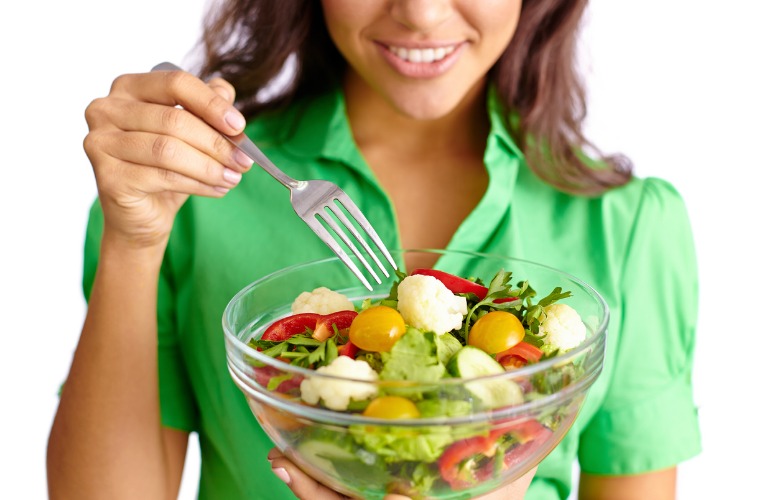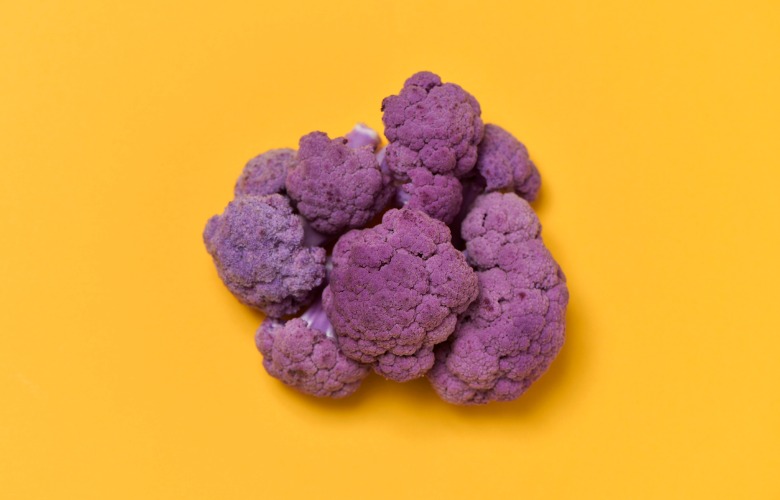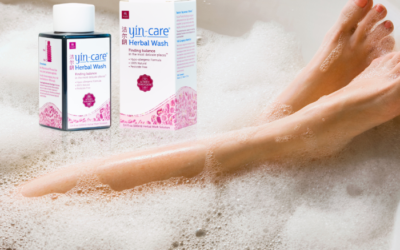The Power of Cauliflower
Cauliflower has been described as the new kale and the new ‘superfood’ for a variety of reasons, now more than ever perhaps due to the popularity of trends such as Paleo, ketogenic and other low carb diets.
From replacing flour in pizza crust to making cauliflower “rice” and mashed “potatoes”, cauliflower’s fairly neutral flavor can take on many different tastes and textures and has proven to be a versatile, nutritious and inexpensive ingredient to use in cooking. Interestingly, cauliflower is one of the few white foods that are nutrient-dense, packed with vitamins minerals and phytochemicals.
Cauliflower is a potent detox booster, as the liver loves fruits and vegetables and cruciferous vegetables is particularly effective. Cauliflower provides antioxidants, high levels of carotenoids, vitamin C, B, folic acid and fiber. In fact, cauliflower contains 80% of your daily recommendations for vitamin C, which is more per 100 grams than in oranges!
For those that wish to count calories, cauliflower contains only 25 grams of calories per 100 g, while kale has 45. Pantothenic acid, or Vitamin B5, helps mobilize fat and lower LDL cholesterol and is significantly higher in cauliflower than kale. (1)
Cauliflower is a cruciferous vegetable and often referred to as the “king” of the Brassica oleracea family. Other vegetables in this cruciferous group include broccoli, cabbage, kale, Brussels sprouts among other varieties, and share much of the same nutritional profile.
The name of this elegant member of the cabbage family comes from the Latin caulis (“stalk”) and floris (“flower”). Cauliflower comes in four colors: white (the most popular and readily available), green, purple and orange. The entire floret portion is edible as well as the green leaves at the base, which are good for adding to homemade vegetable stock. Cauliflower can also come in different sizes, though size doesn’t affect the quality.(2)
Besides its many culinary uses and being a friend to your waistline, cauliflower has vast nutritional benefits as well.

Five reasons why you should consider adding cauliflower to your diet
1. Fights cancer
While cauliflower can be called a superfood due to being packed with vitamins and minerals, one of its most important powers is its cancer-fighting compounds known as glucosinolates. Glucosinolates act like natural pesticides in plant cells, but when consumed by humans, they help with changes in enzyme activities, DNA damage, and slowing the growth of mutated cancer cells. Cauliflower also contains lignans, which are cancer-fighting plant compounds that can help protect against cancer by blocking enzymes that are involved in hormone metabolism and interfering with the growth and spread of tumor cells.(3) Especially effective in the prevention of breast cancer, (4)(5) research has shown that combining cauliflower with curcumin (the active compound in the spice turmeric) may help prevent and treat prostate cancer as well.(6)
2. Improves gut health and reduces inflammation
As inflammation is at the core of every chronic disease, eating anti-inflammatory foods becomes important. Cauliflower is one of the vegetables great for boosting our intestinal defenses, which may lower the risk of inflammatory bowel diseases such as ulcerative colitis, as well as leaky gut. Similar to other cruciferous vegetables, cauliflower provides sulforaphane, which boosts the liver’s detoxifying enzymes. The enzymatic action from eating cauliflower may also protect our brain and eyesight, fight against free radicals, and induce detoxification enzymes.(7) Cauliflower contains a wealth of anti-inflammatory nutrients to help keep inflammation in check, including indole-3-carbinol or I3C, an anti-inflammatory compound that may operate at the genetic level to help prevent the inflammatory responses at its foundational level. (8)
3. Boosts immunity
In the present cold and flu season, eating foods that can boost our immunity is the key to preventing illness. Cauliflower and other cruciferous vegetables contain the necessary AHR ligands we need in our diet and that our essential for our intestinal immune function. (9) Cauliflower contains a phytonutrient that is transformed by our stomach acid into the key that fits into the Ah receptor, stimulating our intraepithelial lymphocytes. Hence, cauliflower kicks off our immune infantry.(10)
4. Decreases risk for heart disease
Due to its anti-inflammatory properties found in its vitamin K, C, anti-oxidant and omega-3 content, cauliflower can help avoid plaque build-up, reduce the chance of high blood pressure and unhealthy cholesterol levels.(11)
5. A few more benefits of cauliflower
Eating cauliflower can also aid in weight loss, help build stronger bones, boost brain health and aid digestion. This is because of its high fiber, low-calorie, and fat content, as well as providing us with calcium and choline (B-vitamin. (12)
Now that we can see the nutritional power of the cauliflower, how is it best consumed?
Optimal intake of cauliflower or other cruciferous vegetables would be 1-1 2/ cups per day. As with any vegetables, be careful not to overcook them, in order to keep as many nutrients intact as possible. Studies show, however, that cooking cauliflower helps improve its ability to bind together with bile acids. Since bile acid-binding is a well-documented method for helping regulate blood cholesterol levels, these studies point to potential cardiovascular benefits from the consumption of cooked cauliflower. (13)
There are no limits to how you can prepare and eat this cruciferous vegetable while providing your body with a plethora of vitamins and minerals that will get the new year started off in the right direction. A popular way to cook it is to roast the whole cauliflower head with some nice spices and slice “steaks” from it once out of the oven. Other ideas include folding in cooked and mashed cauliflower to muffins, pancakes, and hummus, and add florets to casseroles, curries and soups.
Try one of the recipes provided in this article to get you inspired!
Cauliflower “Cheese” Sauce
- 1 small head cauliflower, cut into florets
- 3 shallots, peeled and diced
- 3-4 garlic cloves, smashed
- 1/2 cup (120 ml) almond milk
- 1/3 cup (80ml) nutritional yeast
- 1 heaping tsp Dijon mustard
- juice of 1/2 lemon
- *dash of vegan parmesan cheese (I like the Go Veggie brand)
- salt and pepper to taste
- fresh parsley to serve
*optional
Place the cauliflower in a large pot of water, with 1 tbsp of kosher salt and cook until soft, about 15 minutes or so. Drain the cauliflower and place it in a high-powered blender with the remaining ingredients and puree until smooth and creamy.
Drizzle over whole grain or gluten-free pasta or roasted vegetables, top on pizza, tacos, and rice salads, or use as a dip with whole-grain or gluten-free crackers.

Curried cauliflower soup
- 1 tbsp organic coconut oil
- 1 medium Vidalia onion, thinly sliced
- 1 teaspoon kosher salt, plus more to season
- 4 cloves garlic, minced
- 1 x 2- inch ginger knob, peeled and minced
- 1 large head of cauliflower (about 2 pounds), trimmed and cut into florets
- 3 small carrots, peeled and chopped
- 5 cups organic low-sodium vegetable broth
- 1 tbsp ground coriander
- 1 tbsp ground cumin
- 1 tsp ground turmeric
- 1 tbsp garam masala
- 1 x 15 oz can lite coconut milk
- Juice of 1 fresh lime
- Sea salt and freshly ground black pepper
- 1/3 cup raw cashews for garnish (optional)
- a handful of fresh, chopped cilantro for garnish (optional)
Heat 1 tbsp coconut oil or a little water/veg stock in a large pot over
medium heat, cook the onions with the salt until onions are soft and
translucent, 5-8 minutes.
Reduce heat to low, add garlic and ginger, and cook for 2 additional minutes. Add coriander, turmeric, cumin, and remaining 1/4 teaspoon salt and sauté for another 30 seconds until well incorporated.
Add the cauliflower, carrots and vegetable broth. Bring to a boil over medium-high heat, then reduce the heat to low. Simmer until cauliflower is fork-tender, about 15 minutes.
Working in batches, purée the soup in a blender until smooth and then return the soup to the soup pot. (Alternatively, use an immersion blender to purée the soup right in the pot.)
Stir in the coconut milk and warm the soup. Taste and add fresh lime juice,
more salt, pepper, or spices if you’d like.
To serve, ladle the soup into bowls and garnish with optional raw, chopped cashews and
fresh cilantro.
Resources
1 Foodbeast, Cauliflower vs. Kale: Which Is The Better Superfood?, January 12, 2017. Web. January 5, 2019.
2. Herbst Tyler, Sharon, Herbst Ron, The Food Lover’s Companion, New York: Barron’s Educational Series, 2009. Print.
3 Nutritionfacts.org, Does Rye Bread Protect Against Cancer?, September 19, 2017. Web. January 5, 2018./ Care2.com, What are Lignans?, October 26, 2016. Web. January 6, 2019.
4 Food For Breast Cancer, Cauliflower Is Recommended For Breast Cancer, Web. January 8, 2019.
5 Physicians Committee For Responsible Medicine, Vegetables Reduce Breast Cancer Risk, October 19, 2010. Web. January 8, 2019.
6 Mercola, Top 8 Health Benefits of Cauliflower, February 22, 2014. Web. January 7, 2019.
7 Nutritionfacts.org, Cauliflower, Web. January 5, 2019.
8 Mercola, Top 8 Health Benefits of Cauliflower, February 22, 2014. Web. January 7, 2019.
9 Science Direct, You AhR What You Eat: Linking Diet and Immunity, October 28, 2011. Web. January 7, 2019.
10 Nutritionfacts.org, Our Immune System Uses Plants to Active Gut Protection, October 7th, 2014. Web. January 6, 2019.
11 Dr. Axe, Cauliflower Benefits, Nutrition & Recipes, February 9, 2019, Web. January 8, 2019.
12 Medical News Today, Everything You Need to Know About Cauliflower, August 18, 2017, Web. January 6, 2019.
13 The World’s Healthiest Foods, Cauliflower, Web. January 5, 2019.

Sunny is a vegan lifestyle consultant, chef, wine educator and food blogger. She works with both private and corporate clients, helping people transition to a plant-based diet and vegan way of life, as well as operating as a consultant for restaurants and other food establishments who are looking to veganize their food menus and wine lists. Sunny is the wine director for Vegan Wines, the first vegan online wine club in the United States, and is passionate about animal advocacy. She lives in Beacon, NY with her husband and three dogs: Scooby, Tofu and Nacho. You can contact sunny by email sunny@sunnygandara.com.



